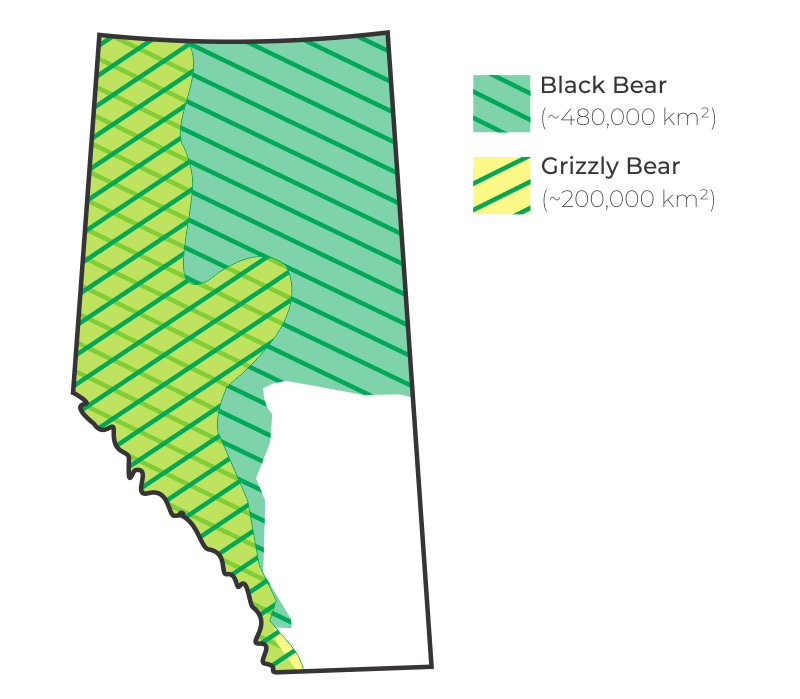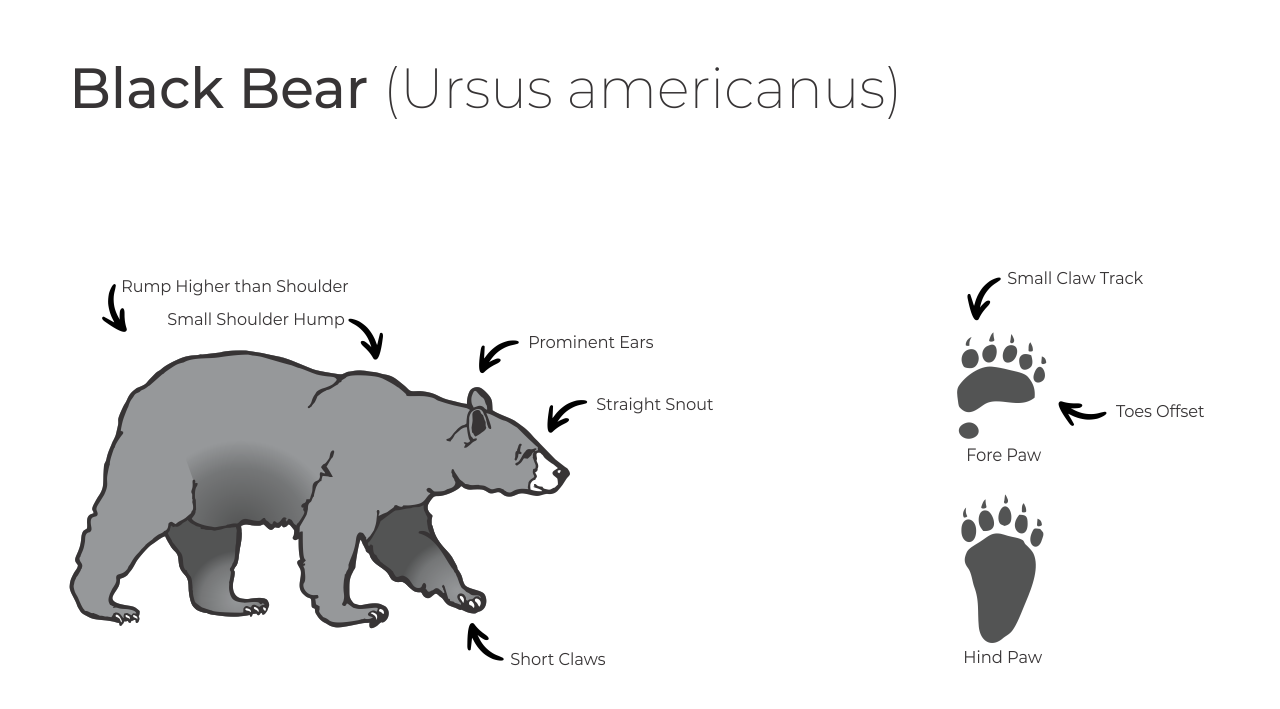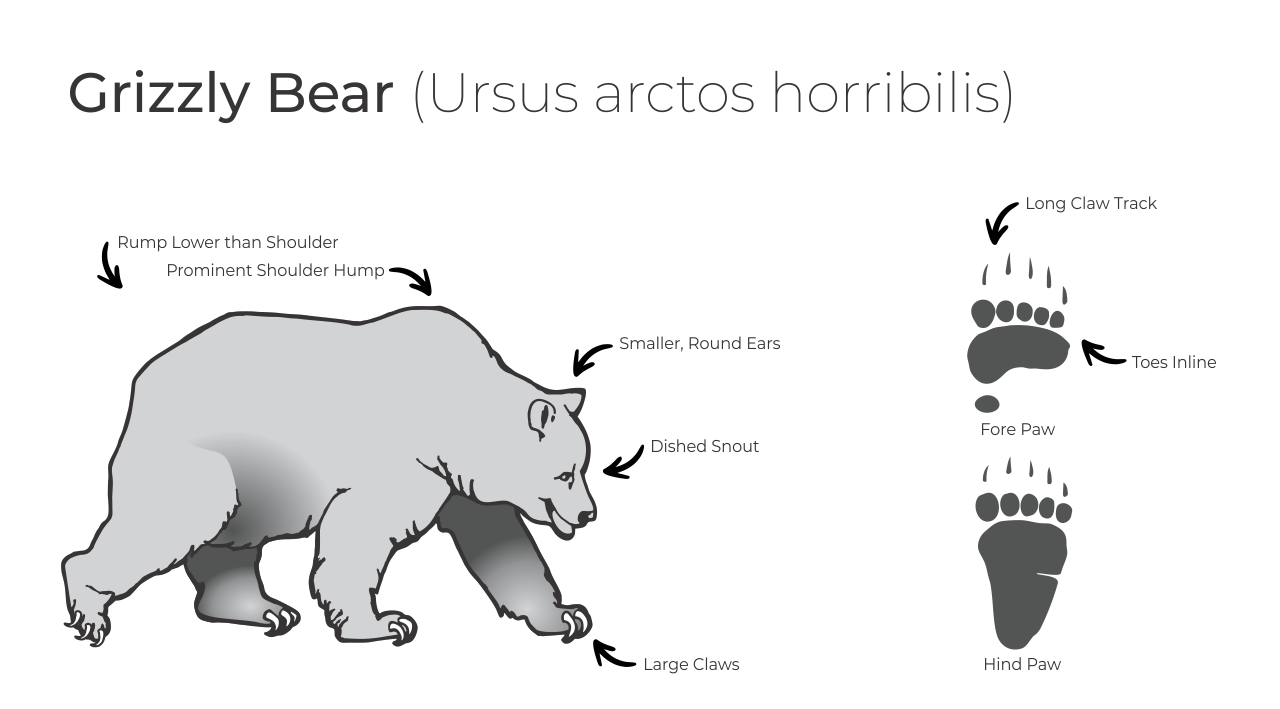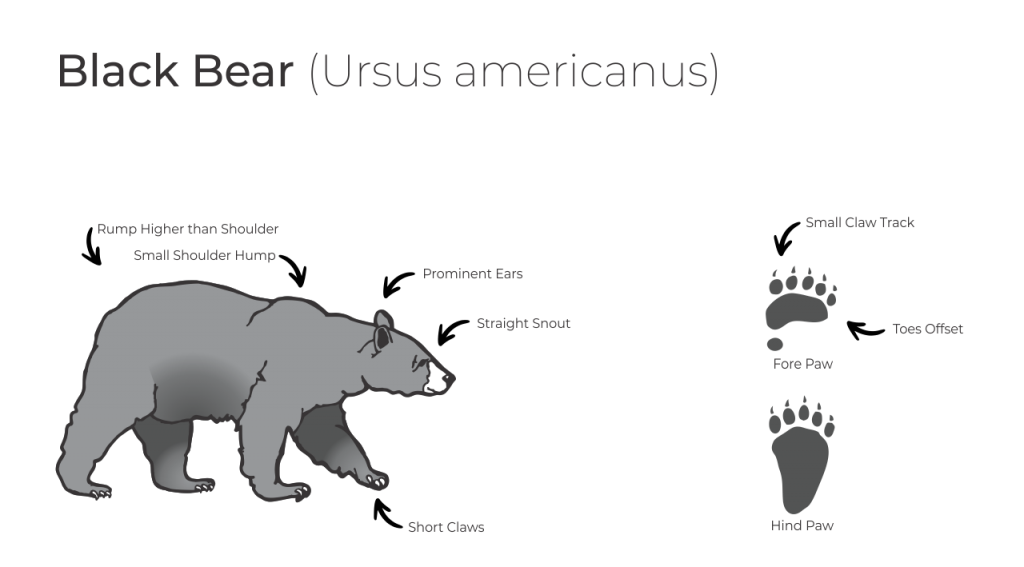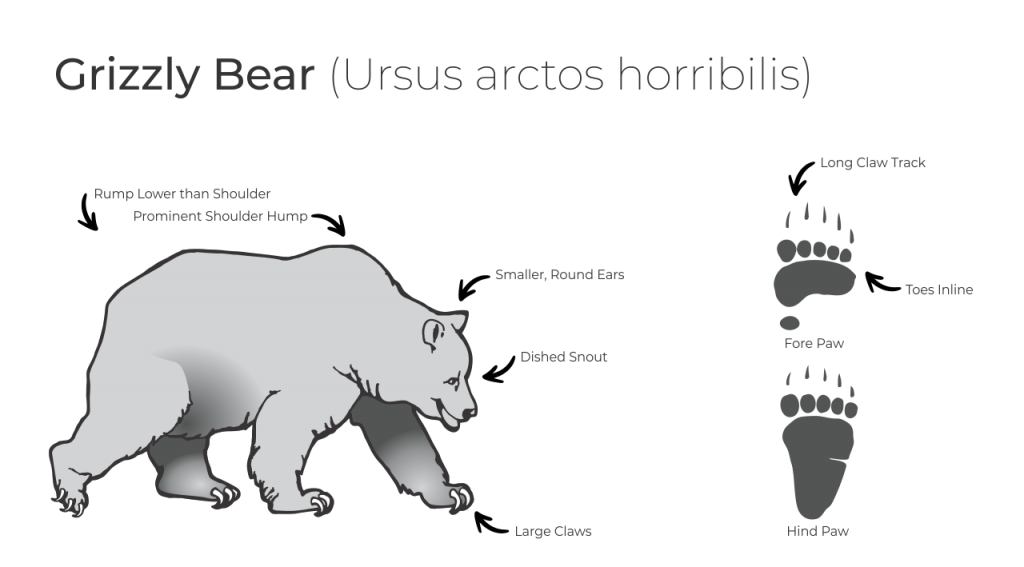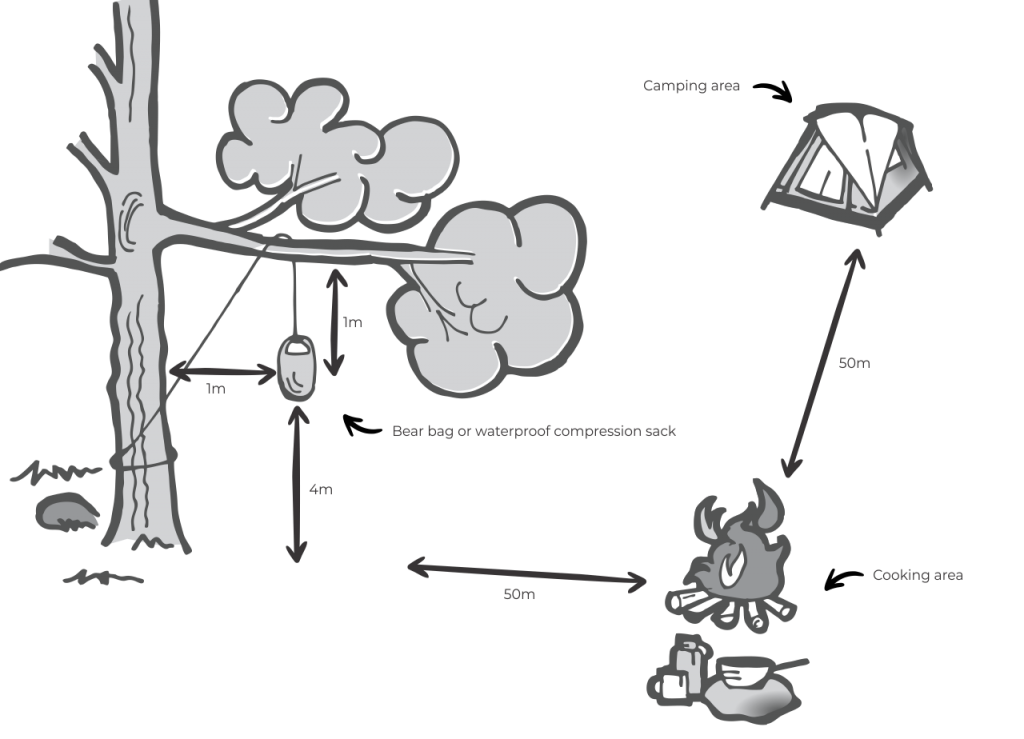Bear Aware
Common Bear Traits
Bears posture and gesture to establish rank and avoid direct conflict. A bear’s primary activity is searching for food. Because their lives revolve around sourcing their next meal, bears can learn to associate food with humans if they have frequent contact with a food source in a human environment such as garbage cans.
Bear season
Characteristics
Bears do fight but will more often use avoidance, restraint, and posturing to prevent injury. They have flexible social structures allowing them to function at low densities or at concentrated food sources with reduced chance of injury. Bears use body language and vocalizations to communicate. They have a dominance hierarchy and pecking order. While they have common traits, their individual personalities can differ greatly.
- Coat colour can be black, cinnamon, or blonde. Not all black bears have a black coat.
- Snout to face forms a straight line (i.e. roman profile).
- Prominent ears.
- No shoulder hump.
- Short claws leave little imprint in track.
- Adult males: 100-200 kg.
- Adult female: 45-100 kg.
- Active spring through autumn.
- Prefer forests, wooded areas and dense brush (year-round)for habitat.
- Diet varies: young shoots, berries, insects, fish.
- Breeding maturity by 3.5 years.
- Mate in spring. Cubs (1-4) born in winter den.
- Primarily tawny brown colour. May range light brown to black. Fur can be silver tipped.
- Snout curved into broad face (i.e. dished shape).
- Smaller ears, more rounded than black bears.
- Pronounced shoulder hump.
- Claws long, obvious in track.
- Adult males: 182-325 kg.
- Adult females: 120-215 kg.
- Active spring to late autumn.
- Prefer open, semi-open country (foothills, alpine meadows). Move to higher elevations in summer and early fall.
- Diet primarily vegetarian, but includes elk, moose, deer.
- Breeding maturity 5-7 years.
- Mate in spring, Cubs (1-3) born in winter in den.
Prevention
- When visiting their habitat, be respectful of their behaviours and do not disturb them.
- Make noise. Holler or talk loudly. Use an air horn in dense brush and near streams.
- Don’t use bear bells. (Bear bells are often colloquially called 'Dinner Bells').
- Avoid animal carcasses. Berries, fish, and carcasses are all food sources for bears and they will defend their meals. Watch for signs of carcasses such as circling magpies and ravens. Leave the area immediately.
- Check for signs of bear presence such as scat, tracks, and diggings (rolled logs, rocks, disturbed ant hills).
- Watch for cubs as bears may become more aggressive if they feel their young are threatened.
- Stay in groups.
- Stay on established trails and hike during daylight.
Deterrents
The intent of deterrents is to create a negative experience for the bear so they are less likely to interact with humans in the future.
Noisemakers are most effective when used as a deterrent from a distance. Always assess the situation before using noisemakers. Make sure your surroundings are clear and that the bear has obvious escape route. Noisemakers may not immediately deter bears that may have encountered them before.
Bear spray is essential. It's the most effective deterrent available for close-proximity encounters. Always carry your bear spray on your person, even when sleeping; never in your backpack. Practice if possible, but make sure to use it away from human use areas since the odour attracts bears after discharge.
Encounters
If a bear approaches you, stop and remain calm. Have bear spray ready and asses their behaviour to determine why it’s approaching.
- Defensive encounter: may occur if bear is startled by your sudden appearance or if it feels threatened. Signs of a defensive encounter:
- Vocalization – blowing, huffing, woofing, growling, snapping jaws.
- Appearing stressed – flicking ears, swatting ground.
- Agitation – may bluff charge. Don’t run! It's telling you to leave the area.
- Non-defensive encounter / predatory encounter: may develop if it has spotted you but doesn’t show signs of stress. These encounters are more likely to occur at night. While they may be curious, they may also be assessing you as possible prey (food), or asserting dominance.
Signs of a non-defensive encounter:- Staring intently – avoid eye contact if showing predatory signs. Could provoke aggressive behaviour.
- Circling you – may circle to detect your scent, moving closer as they assess you.
- Remaining quiet – if they stay quiet, they may be assessing your food value.
- Ears and head up – strong sign they are interested in you or could be a sign of curious behaviour. (Not necessarily predatory. Look for other signs.)
Reacting to Encounters
If a bear IS NOT aware of your presence, slowly move away from the area trying not to draw attention to yourself.
If a bear IS aware of your presence, stay calm. Speak to the bear calmly to let them know you are human and not prey. Back away calmly, never run! Group together to show you are not an easy target, but don’t appear threatening. Do not drop your backpack as it can provide protection.
Defensive encounter
- Do not run! Stay calm and do not make any sudden movements. Don’t appear threatening to the bear.
- Speak to the bear in a low and soft voice to let them know you are not a prey animal.
- If in a group, keep together.
- Use bear spray if the bear is in close proximity
- If the bear approaches, stand your ground. It may bluff-charge. IF THE BEAR MAKES CONTACT, PLAY DEAD!
- Lay on your stomach with your legs spread apart so the bear can not easily flip you.
- Hold your hands behind your neck to protect your head.
- When the bear stops the attack, stay still until they have left the area.
- Most defensive attacks last ~2 minutes. If the bear continues to attack, the attack has most likely become predatory. FIGHT BACK!
Predatory encounter
- Do not run! Stay calm and don’t make sudden movements.
- Make yourself look big and shout at the bear to remind it that you are not easy prey.
- If the bear is at a respectable distance, use your air horn. Use bear spray if in close proximity.
- Use rocks and sticks as weapons, aiming for the face, nose, and eyes.
Campsite Management
4-1-1 Rule
Bear bags / canisters, or waterproof compression sacs should be used to store food, cosmetics, and other scented attractants in a designated area away from your camp. The container should be suspended from a tree or designated platform at least 4 m off the ground, at least 1 m below the suspension point, and at least 1 m away from the tree trunk or vertical support.
50/50 Rule
Your sleeping area and your food storage area should each be at least 50 m away from your camp kitchen or designated cooking area.
Last revised on 13 October, 2023.
